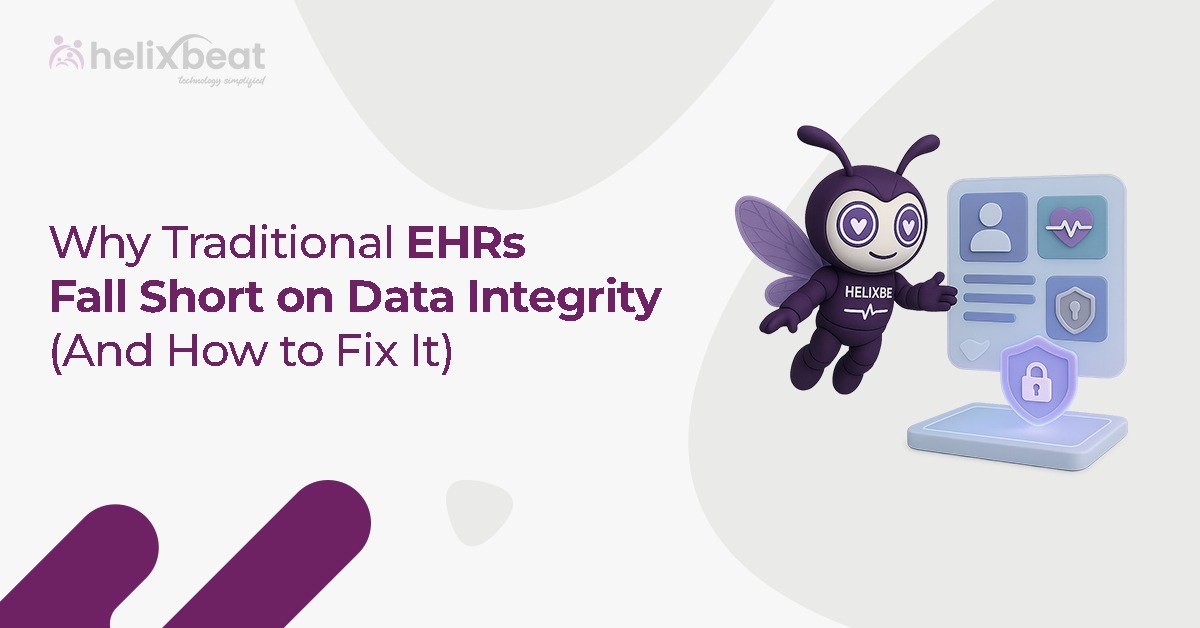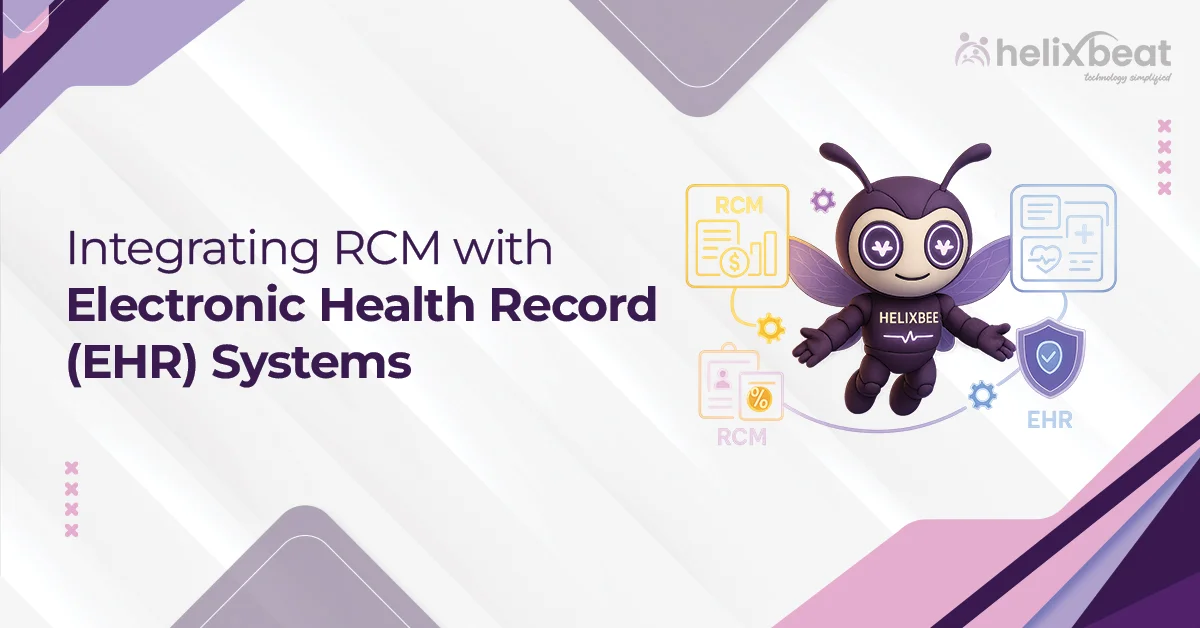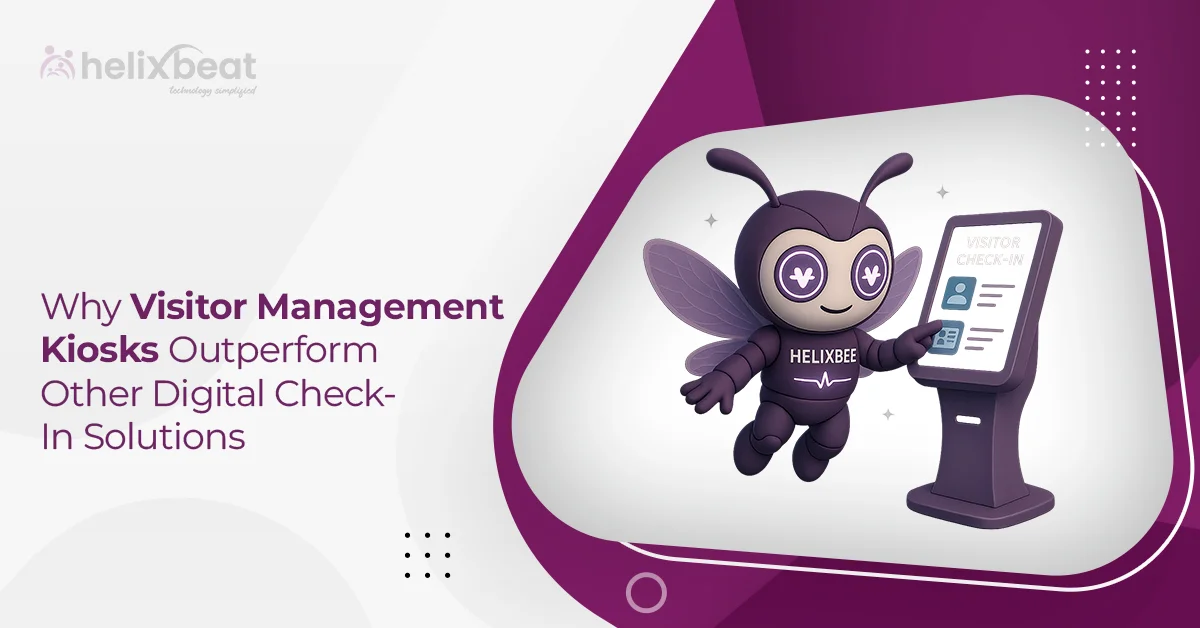Electronic health record data is the spine of modern healthcare systems, providing a centralized and digital solution for patient records. However, one of the critical challenges healthcare providers face is maintaining the integrity of this data. Traditional EHR systems often struggle to ensure that the data is always accurate, up-to-date, and accessible across all platforms and departments. Without proper data integrity measures in place, healthcare institutions risk miscommunication, errors in treatment plans, and delayed care, ultimately compromising patient outcomes.
PULSE by HelixBeat helps address these challenges by integrating with existing EHR systems, ensuring that electronic health record data is always accurate, secure, and up-to-date. By enhancing data integrity through real-time updates, automated data synchronization, and secure storage, PULSE empowers healthcare providers to deliver better care, improve patient engagement, and streamline operations.

Table of Contents
What is Data Integrity in Healthcare?
Data integrity in healthcare refers to the accuracy, consistency, and reliability of patient data, ensuring it is up-to-date and accurate across all platforms and systems. In healthcare, patient health information plays a pivotal role in decision-making, diagnosis, and treatment planning. If the data entered into electronic health records (EHRs) is flawed, incomplete, or inconsistent, it can lead to incorrect diagnoses, medication errors, and poor patient outcomes.
Maintaining data integrity involves safeguarding patient data from corruption or unauthorized alteration and ensuring it is accurate at every step. This includes processes such as routine data validation, error correction, and the use of encryption methods to protect sensitive information.
For healthcare organizations, having reliable patient data is crucial for delivering safe and efficient care. With the increasing use of digital solutions, integrating patient management software like PULSE by HelixBeat automates data management processes, reducing human errors and ensuring that patient records are always accurate, consistent, and securely stored. It also improves patient engagement in healthcare, providing a comprehensive solution that enhances care delivery while maintaining electronic health record data integrity.
Explore How PULSE Enhances Data Integrity in EHR Systems
What Are the Methods to Maintain the Integrity of the EHR?
Maintaining the integrity of electronic health record (EHR) data is essential for providing accurate, reliable, and secure patient information. Ensuring that data remains consistent, accurate, and accessible allows healthcare providers to make informed decisions, improving care delivery. Below are some of the most effective methods to maintain EHR data integrity:
1. Regular Data Validation
- Regular data validation is crucial to ensure the accuracy and consistency of patient records.
- This process involves continuously reviewing and verifying data entry, such as medical histories, diagnostic results, and treatment plans.
- By setting up automatic validation checks, healthcare providers can easily spot discrepancies or missing information early, preventing errors before they impact patient care.
- Routine audits also help catch any inconsistencies in data, which is essential for maintaining both accuracy and reliability in patient records.
2. Data Encryption
- Data encryption is one of the most critical methods for ensuring EHR data security and integrity.
- Encrypting patient data both in transit (as it moves between systems) and at rest (when stored in databases) ensures that unauthorized individuals cannot access sensitive health information.
- By safeguarding data from cyber threats, encryption protects both the integrity of the data and the privacy of patients.
- This method also complies with regulatory standards like HIPAA, which mandate strong data security practices.
3. Audit Trails
- Implementing audit trails is another key method for maintaining EHR data integrity.
- An audit trail tracks all changes made to patient records, documenting who made the change, when it was made, and the nature of the change.
- This provides transparency, ensuring that any data modifications can be traced back to their origin.
- If an error or breach occurs, audit trails help identify where the issue originated and provide insight into how to address it.
Learn More About How PULSE Uses Audit Trails for Data Integrity
4. Standardized Data Entry
- Standardized data entry reduces the risk of human error and ensures consistency across all patient records.
- Using predefined codes, templates, and formats for inputting data minimizes the chances of inaccurate information being recorded.
- By ensuring that all data is entered in the same manner, healthcare providers can avoid discrepancies and confusion when reviewing patient records.
- Standardization also enables easier integration between different systems, ensuring that patient data remains intact when transferred across platforms.
- Example: PULSE supports standardized formats for all patient data entries, such as diagnosis codes, medication prescriptions, and appointment details, reducing errors and enhancing interoperability.
5. Real-Time Data Synchronization
- Real-time data synchronization ensures that patient health information is always up-to-date and accurate across all systems.
- By using automated tools like PULSE, patient data is instantly updated and synchronized in real-time, eliminating the risks associated with outdated or inconsistent information.
- Whether a patient’s health data is updated by a primary care physician or a specialist, PULSE ensures that all team members have access to the most current information, enabling timely, accurate decision-making.
- Example: With PULSE, any update made in one part of the system (e.g., a new test result) is immediately reflected in all relevant records, ensuring that no healthcare provider works with outdated data.
What is a Primary Strategy for Ensuring Data Integrity in an EHR System?
The primary strategy for ensuring data integrity in EHR systems is automation. By automating the data entry, validation, and synchronization processes, healthcare organizations can significantly reduce the risk of human errors and ensure data consistency.
Automated systems, like PULSE, integrate directly with electronic patient record systems to provide real-time updates and alerts for discrepancies, allowing healthcare providers to catch and correct issues before they affect patient care. These systems also enable automatic data backups and audit trails, ensuring that all changes are traceable and that data is protected from corruption or loss.
The Difference Between Data Integrity and Security
Here are the key differences between data integrity and data security, demonstrating that while both are critical for maintaining electronic health record data, they focus on distinct aspects of data management and protection. Ensuring both data integrity and security is essential for delivering high-quality, secure patient care.
How to Troubleshoot EHR System Errors or Performance Issues
When dealing with EHR system errors or performance issues, the first step is identifying the root cause. Common issues can include:
Data synchronization problems: If patient records are not syncing properly across systems, this can result in incomplete or outdated information.
System crashes or slow performance: If the EHR system is running slowly or frequently crashing, it can disrupt healthcare delivery and cause frustration for both patients and providers.
To resolve these issues:
Ensure that all systems are regularly updated and patches are applied.
Regularly audit and clean the database to remove redundant or incorrect data.
Integrate a more reliable system like PULSE that ensures real-time data syncing, automated backups, and system monitoring to prevent downtime and maintain consistent performance.
Request Support for EHR Troubleshooting with PULSE
Significant Challenges in Electronic Health Records Data Quality and Management
Managing EHR data quality is a significant challenge for healthcare organizations, as they handle large volumes of sensitive patient information daily. Here are some of the key obstacles:
1. Inconsistent Data Entry
- One of the most common issues in electronic health record data management is variability in how data is entered.
- Healthcare providers often use different methods to input patient information, whether through manual entry or voice recognition, which can lead to errors or omissions.
- Inconsistent data entry practices can cause discrepancies in medical histories, treatment plans, and medication records, making it difficult for healthcare providers to make informed decisions.
- This can lead to incorrect diagnoses, delayed treatments, and ultimately, compromised patient care.
2. Data Overload
- Healthcare providers are often inundated with vast amounts of patient data, from medical histories and test results to appointments and billing information.
- As the volume of data grows, it becomes increasingly complex to manage and utilize effectively.
- This data overload can lead to inefficiencies, delays in decision-making, and even the risk of missing critical patient information.
- When healthcare teams are overwhelmed with data, they may miss significant trends or warning signs in a patient’s health, ultimately affecting care quality.
3. Interoperability Issues
- Many healthcare systems rely on different platforms and software solutions, which often fail to communicate effectively.
- This lack of interoperability makes it challenging to share electronic health record data across various systems, leading to fragmented care and communication gaps.
- Healthcare providers may not have access to the most up-to-date information on a patient’s health, which could affect diagnoses, treatments, and patient outcomes.
- Additionally, the inability to easily exchange data across departments and healthcare facilities can result in delays, errors, and inefficient care coordination.
How Does PULSE by HelixBeat Improve EHR Data Integrity?
PULSE by HelixBeat is designed to solve the common challenges associated with EHR data integrity. Here’s how it works:
- Data Validation and Verification: PULSE automates data checks to verify that the information entered into the electronic patient record management system is accurate and complete, minimizing the risk of errors.
- Secure Data Storage: PULSE offers HIPAA-compliant, encrypted data storage, ensuring that patient data is not only accurate but also securely stored and accessible only to authorized personnel.
- Automated Data Backup: Regular, automated backups ensure that patient data is safe from loss or corruption, contributing to both data security and integrity.
Wrapping Up
Maintaining the integrity of electronic health record data is a significant challenge faced by healthcare organizations. Inconsistent, outdated, or inaccurate data can lead to medical errors, poor decision-making, and diminished patient care. Without robust systems in place, healthcare providers often struggle to keep data synchronized across various platforms, resulting in inefficiencies and frustration.
PULSE by HelixBeat addresses these issues head-on by integrating seamlessly with EHR systems, ensuring real-time updates and automated synchronization of patient data. By centralizing all patient data into one platform, PULSE helps eliminate discrepancies, reduce errors, and improve the overall flow of information between healthcare providers. With PULSE, healthcare organizations can trust that their electronic health record data is accurate, secure, and easily accessible, enabling them to provide superior patient care while improving operational efficiency.
Start Ensuring Data Integrity in Your EHR System with PULSE Today
FAQs
- What are the methods to maintain the integrity of the EHR?
Methods include regular data validation, encryption, audit trails, and real-time updates to ensure data accuracy and completeness.
- What is a primary strategy for ensuring data integrity in an EHR system?
Automation of data entry and synchronization across systems ensures real-time updates, minimizing errors and discrepancies.
- How do you troubleshoot EHR system errors or performance issues?
Regular updates, database audits, and integrating reliable systems like PULSE can address common EHR system errors and improve performance.
- What are the major challenges in electronic health records data quality and management?
Common challenges include inconsistent data entry, data overload, and interoperability issues between different healthcare systems.
- What is data integrity in healthcare?
Data integrity in healthcare refers to the accuracy, consistency, and reliability of patient health information, ensuring that it is up-to-date and trustworthy.
- What is the difference between data integrity and security?
Data integrity focuses on the accuracy and completeness of data, while data security focuses on protecting that data from unauthorized access.
- How does PULSE improve EHR data integrity?
PULSE offers real-time updates, automated data checks, and secure, centralized patient data, ensuring consistent and accurate EHR management.
- How do EHRs facilitate better data integration?
EHRs enable seamless sharing of patient data across various healthcare systems, improving care coordination and decision-making.
- How does PULSE integrate with existing EHR systems?
PULSE seamlessly integrates with your existing EHR systems, enhancing data accuracy, accessibility, and patient engagement.
- Why is patient engagement important in healthcare?
Engaged patients are more likely to follow treatment plans, manage chronic conditions, and achieve better health outcomes.
- What is digital patient engagement?
Digital patient engagement refers to the use of digital tools and platforms to empower patients to take an active role in their healthcare.
- What are the benefits of using PULSE for patient engagement?
PULSE enhances communication, automates reminders, and centralizes patient data, improving engagement and care coordination.














